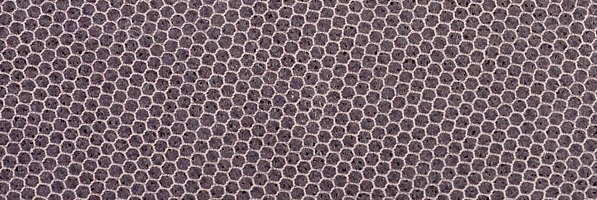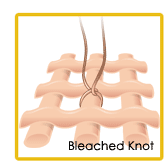Swiss Lace Wigs
The Stir About Swiss Lace
Swiss lace wigs are lace cap wigs made with Swiss lace as the primary material used to make the wig cap (there are also lace wigs that use French lace at the back and Swiss at the front hairline).
There are two main types of lace used to construct the cap
for lace wigs; Swiss and French and some retailers also offer super fine Swiss lace. You can learn about French lace in-depth here.
Swiss
lace is used for synthetic lace wigs and is also used for human hair (remy and non-remy) lace wigs (both full lace wigs and lace front wigs) and lace frontals.
Swiss lace slightly thinner than French lace and this is in part due to the holes being larger – although that sounds odd, if you think about a honeycomb the picture unfolds. Larger holes mean a less dense structure. For some, this this small difference is not enough for them to want to use Swiss lace and they prefer the increased durability of French lace wigs.
It’s important to remember that neither types of lace are invisible – Swiss lace is simply slightly less visible.
Below is a close up of the two types of lace - you can see the slight difference in the size of the holes.
 French Lace - smaller holes
French Lace - smaller holes Swiss Lace - larger holes
Swiss Lace - larger holesAs Swiss lace is slightly thinner, it is not as
robust as and therefore less durable than French lace if not handled properly.
Its lighter structure means it has a lower tensile strength (tensile strength is ta measurement of the force required to pull something to the point where it breaks) it is this lower tensile strength (due to larger holes) that means Swiss lace will tear more easily than French lace.
This means that Swiss lace wigs are more suited to those who are more
experienced with lace wigs. A Swiss lace wig can be used by someone whose lifestyle
means that the hair (and therefore lace) will be washed frequently – it’s
simply that these activities must be done with extra care.
Swiss Lace Wigs - Blending Hairlines

Swiss lace easily blends with the hairline when worn and the slightly lighter structure means that its visibility is lower than French lace. It’s key to remember that lace visibility is also dependent on factors such as how the wig has been ventilated such as single or double knots, the type of knot used and whether the knots have been bleached.
Swiss Lace Wigs - Lace Colours
Swiss lace is available in what is described as transparent (but technically speaking is not actually transparent), a light beige (similar to peach colour), light brown, medium brown and dark brown.
If the Swiss lace on your wig does not match your scalp, there are a few options to remedy the situation:
- use regular concealer on the parting or hairline
- dye the lace (you can even use tea to go darker)
- use a fabric marker
Cap Constructions Available for Swiss Lace Wigs
There are plenty of full lace wig cap constructions that use Swiss lace, you can choose any of the following...
No stretch (lace only and nothing else)
Ear-to-ear stretch
Stretch tabs at the ears (also known as stretch ear tabs)
Stretch at the crown
Silk top (also known as hidden knots, silk base and lace injected)
Thin skin perimeter
No glue (adhesive) needed (also known as “glueless”)
If none of those suit you, why not create your very own custom made full lace wig.
If you'd prefer a lace front wig then the following links show how Swiss lace can be used in lace front wigs - just click to learn more...
Stretch caps (hair is hand tied onto stretch lace)
Standard open wefts
Don't require adhesives (also known as “glueless”)
V-Lace front wigs
If you find that none of these quite fit the mould then you can always opt for a custom lace front wig.
So there you have it, a quick course in Swiss lace wigs.
Jump from Swiss Lace Properties to Wig Q&A Page
Jump From Swiss Lace Wigs to Home Page




